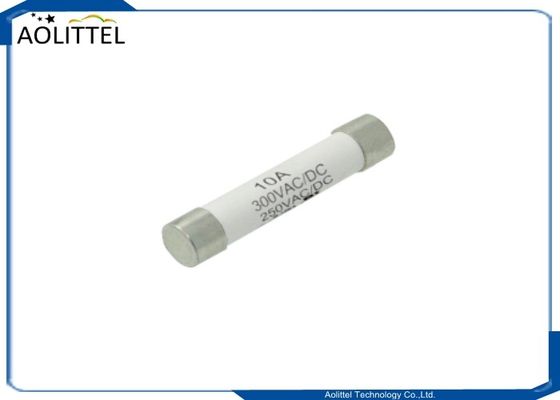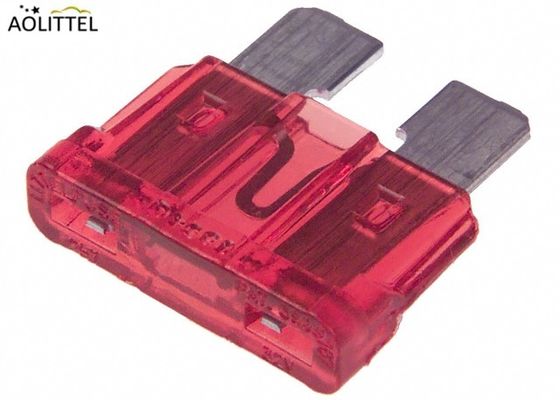Automotive Plug-in Type Plastic Housing 10A Red Medium Size ATC Auto Blade Fuse With Zinc Or Aluminum Alloy
Description
For the automotive industry, the ATC fuse has become the original equipment circuit protection standard for foreign and domestic automobiles and trucks.
______________________________________________________________________________ Download________
Download________
The standard ao littel medium blade fuses are the most stable and cost effective auto electrical solution to circuit protection on vehicles for the last 40 years. The reliability and price of the auto blade fuse ensure they will be around for sevaral years to come. Automotive spade style blade fuses used to replace a blown fuse and create single circuit load protection or a bank of protective in-line fuses.
Fast-acting ATC blade fuses for automotive and low-voltage control circuits.
| Ao littel Blade Fuse Family Member |
| NO. |
Size |
Series |
Votalge |
| 1 |
Mini |
ATM |
32V/48V/58V |
| 2 |
Medium |
ATC/ATO |
32V/48V/58V |
| 3 |
Maxi |
APX/APS |
32V/48V/58V |
Features and benefits
• Industry standard color coding for quick identification of amp rating
• Tin-plated zinc terminals for corrosion resistance and enhanced conductivity
• UL Recognized for use in low voltage control circuits
• Wide -40°C to +100°C operating temperature range meets the needs of extreme environments
• Lead free, halogen free and RoHS complaint
• Test points on specific part/package numbers may speed up circuit troubleshooting
• Readily identifiable and easily replaced
• Construction-Plastic housing with zinc fuse element and terminals.
Typical Applications
- Automotive
- Low voltage control circuits
Dimension (Unit :mm, Tolerance±0.4mm)

Specification
| Interrupting Rating |
1000A @ 32/48/58 VDC
|
| Voltage Rating |
32/48/58 VDC
|
|
Operating Temperature Range
|
-40˚C to +125˚C
|
|
Terminals
|
Zinc alloy(default) or Aluminum alloy
|
|
Housing Materials
|
PC
Housing flammability rating,UL94
|
| Agency |
Meets SAE J2077
ISO 8820
UL 248 Special Purpose Fuses
|
Environmental
• Operating temperature range -40°C to 125°C, 95% RH non-condensing.
• Storage temperature range -5°C to 35°C or lower, 85% RH non-condensing.
Time-Current Characteristics
| % of Rating |
Opening Time |
| MINI |
MAX |
| 110 |
4H |
/ |
| 135 |
0.75S |
10min |
| 200 |
0.15S |
5S |
| 350 |
0.080S |
0.250S |
| 600 |
0.030S |
0.100S |
Electrical Characteristics
| Part Number |
Current Rating |
Voltage Rating (VDC) |
Typ. Voltage Drop |
Cold Resistance |
I2t |
Housing Color |
| ATC-001 |
1A |
32/48/58 |
176mV |
60.88mΩ |
9.7A²s |
Black |
| ATC-002 |
2A |
32/48/58 |
171 mV |
55.60mΩ |
2.8A²s |
Tan |
| ATC-003 |
3A |
32/48/58 |
153 mV |
33.75mΩ |
9.4A²s |
Purple |
| ATC-004 |
4A |
32/48/58 |
121 mV |
23.48mΩ |
17A²s |
Pink |
| ATC-005 |
5A |
32/48/58 |
129 mV |
17.75mΩ |
25A²s |
Orange |
| ATC-07.5 |
7.5A |
32/48/58 |
135 mV |
10.85mΩ |
68A²s |
Tan |
| ATC-010 |
10A |
32/48/58 |
108mV |
7.42mΩ |
93A²s |
Red |
| ATC-015 |
15A |
32/48/58 |
98mV |
4.58mΩ |
270A²s |
Blue |
| ATC-020 |
20A |
32/48/58 |
96mV |
3.21mΩ |
380A²s |
Yellow |
| ATC-025 |
25A |
32/48/58 |
86mV |
2.36mΩ |
625A²s |
Natural |
| ATC-030 |
30A |
32/48/58 |
87mV |
1.85mΩ |
1130A²s |
Green |
| ATC-035 |
35A |
32/48/58 |
85mV |
1.5mΩ |
1430A²s |
Purplish red |
| ATC-040 |
40A |
32/48/58 |
85mV |
1.35mΩ |
1750A²s |
Purple/Orange
|
Note: The cold resistance is the reference value with an error of ± 6%
Temperature Rerating Curve

Time-Current Characteristic Curves

How to identify ao littel auto blade fuses ?
We have a look at the different types and how to identify the one you need.
Modern blade fuses have replaced older glass-tube fuses on vehicles and machinery. Blade fuses come in three size: low profile mini, mini, regular and maxi. Larger types have higher Amp ratings.
Maybe you found it's hard to find a new vehicle or farm machine that still uses glass-tube electrical fuses, although there are still many older working machines equipped with them; and some other electrical gadgets still use them. New vehicles and farm machines now almost exclusively use blade style, also known as plug-in, fuses.
Many people are used to looking for the Amp rating stamped into the nickel-plated ends of glass-tube fuses. On blade fuses, the Amp rating is shown on the top of the plastic body. Depending on the manufacturer, that rating may be embossed into the plastic or only printed on. And if it’s just printed, the number can wear off over time, which can leave you wondering what rating a blown blade fuse had when you need to replace it.
Fortunately, blade fuses are also colour coded. So even if the Amp rating number is disappeared, you can still determine the fuse rating by its standardized body colour (see below).

They are three common blade fuse sizes: the small minis (ATM), mid-sized regular (ATC/ATO) and the large maxis (APX). Also a low profile version of the mini, the APS, which uses the same universal Amp colour coding system.
The regular-sized ATC fuse is more common than the ATO. The ATC has a fuse element that is closed (hence the “C” in the code) inside the plastic housing, sealing it from the environment to prevent corrosion from developing. The ATO fuse is open on the bottom, exposing the fuse element between the blades. ATC fuses are the best choice for use on machinery where they could be exposed to the weather. The high probability of corrosion build up could eventually interfere with current flow on an ATO type exposed to moisture.

 Your message must be between 20-3,000 characters!
Your message must be between 20-3,000 characters! Please check your E-mail!
Please check your E-mail!  Your message must be between 20-3,000 characters!
Your message must be between 20-3,000 characters! Please check your E-mail!
Please check your E-mail! 














